Building a gazebo doesn’t have to drain your wallet or turn into a complicated construction project that requires a pro crew.
If you’ve ever dreamed of transforming your backyard into a charming retreat — a cool shaded haven for summer evenings or a cozy nook for weekend barbecues — then this guide is your new best friend.
Gazebos bring style, comfort, and a sense of purpose to outdoor spaces, but you don’t need to break the bank or tackle a mountain of lumber to get there.
Why Build a DIY Gazebo?
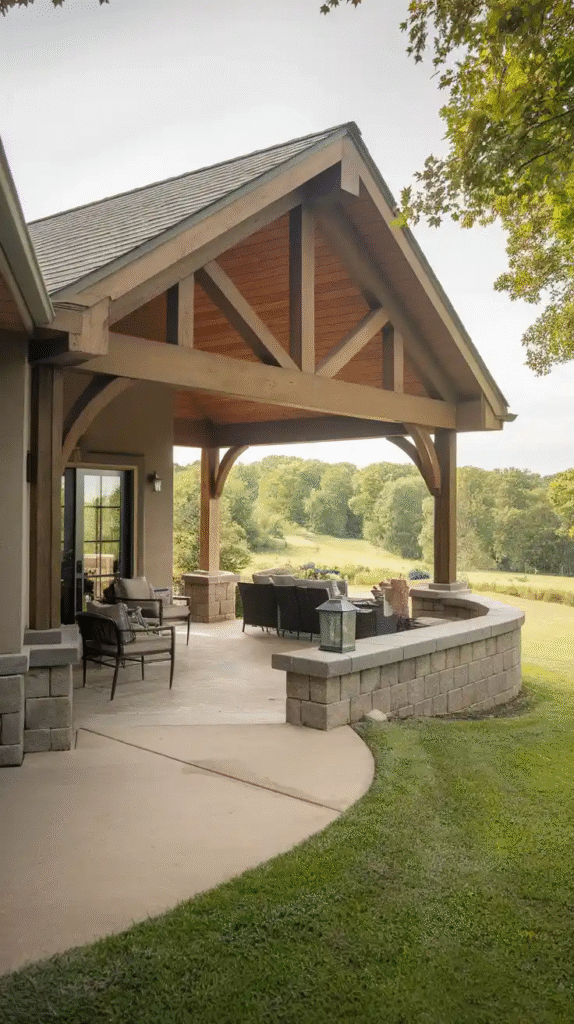
A gazebo is more than just an outdoor shelter — it’s the centerpiece for your garden’s social life, a stage for morning coffees, and a fortress against too much sun or rain.
Building one yourself means you control every detail from size and style to the materials used, and you get the satisfaction of knowing you crafted your own slice of paradise. Plus, DIY projects often cost a fraction of buying pre-made gazebos or hiring contractors.
Planning Your DIY Gazebo: Start with a Solid Foundation
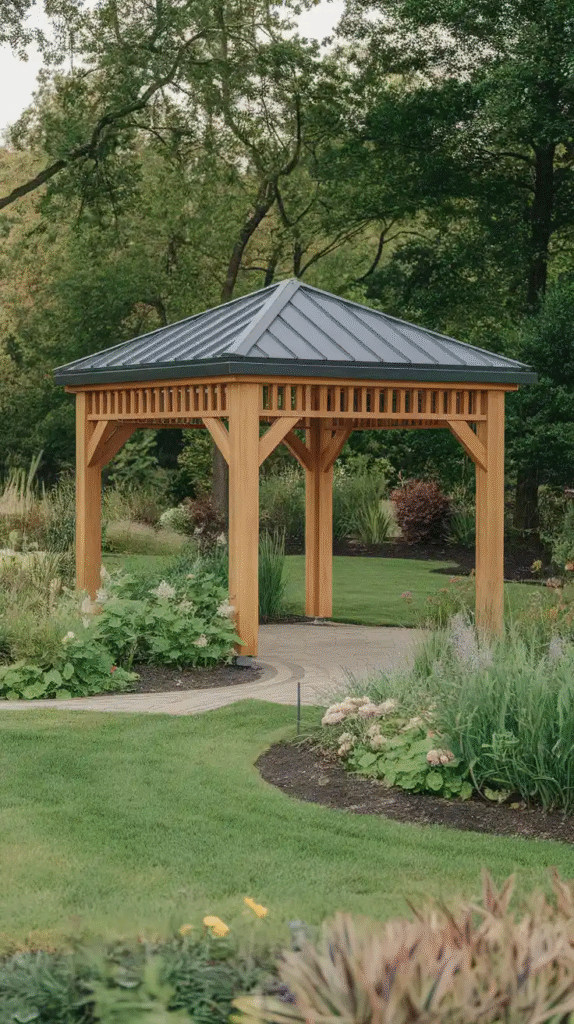
Before you start pounding nails, think through the design basics. The size of your yard, your budget, and the intended use of the gazebo are key considerations. Will it be a small, intimate nook for two, or a larger gathering spot for friends and family? Also, check local building codes and permits; nothing ruins a project faster than unexpected red tape.
Materials Matter: Cheap Doesn’t Mean Cheap Quality
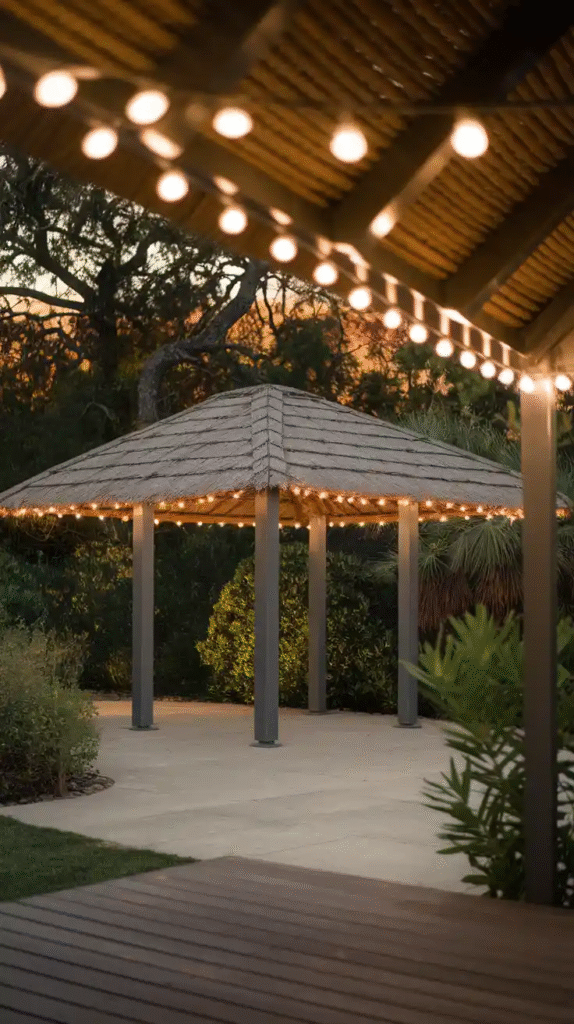
One of the sneaky secrets to building a great gazebo on a budget is choosing affordable yet durable materials. Pressure-treated lumber, reclaimed wood, or even pallets can form the backbone of your structure without busting your bank account. Vinyl and metal parts might be pricier upfront but could save money on maintenance down the road.
1. Pallet Wood Gazebo
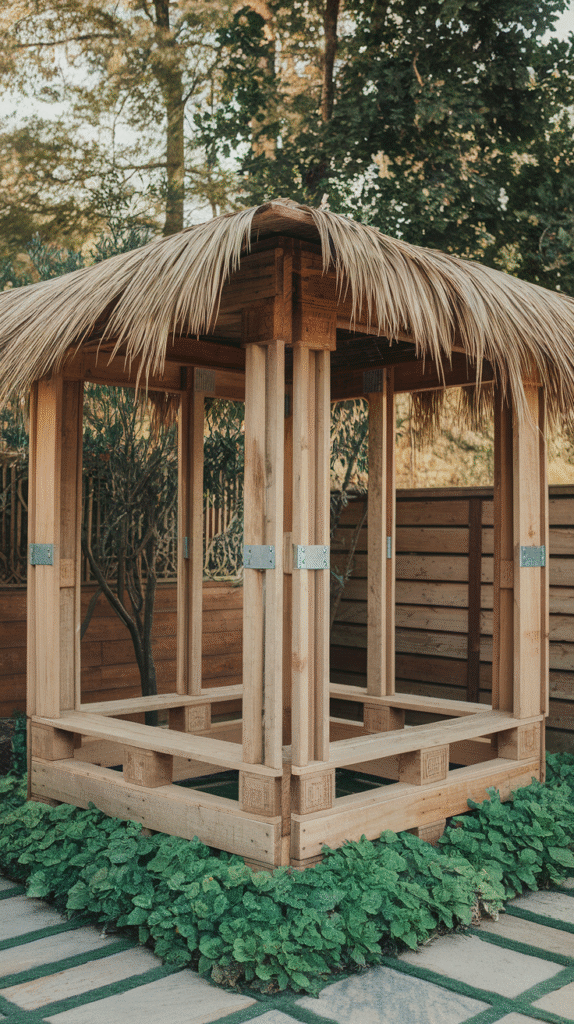
Pallets are the unsung heroes of budget DIY projects. With a bit of elbow grease and sanding, pallet wood transforms into a rustic, charming gazebo frame.
I once built a small gazebo using pallets from a local hardware store, which saved me hundreds of dollars. The grain and weathering on pallets give the structure a warm, lived-in look. Just be sure to select heat-treated pallets free from chemicals.
2. PVC Pipe Gazebo
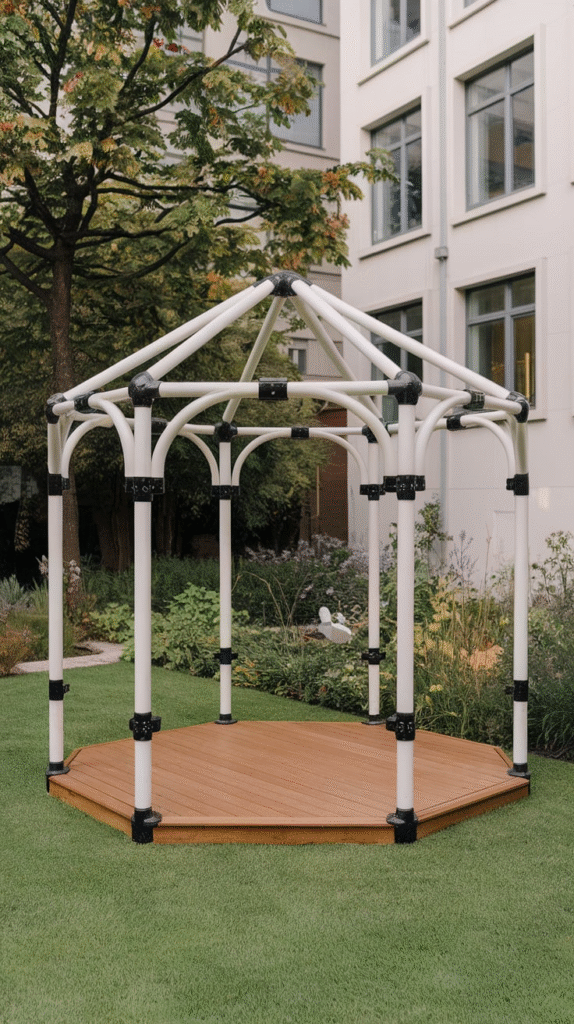
If woodworking isn’t your thing, PVC pipes offer a lightweight, affordable alternative for building a gazebo frame. Using connectors and joints, you can assemble a frame quickly, then cover it with fabric, tarp, or even climbing plants. This type of gazebo is easy to dismantle or move, perfect if you want a temporary setup or a solution for uneven terrain.
3. Recycled Doors Gazebo
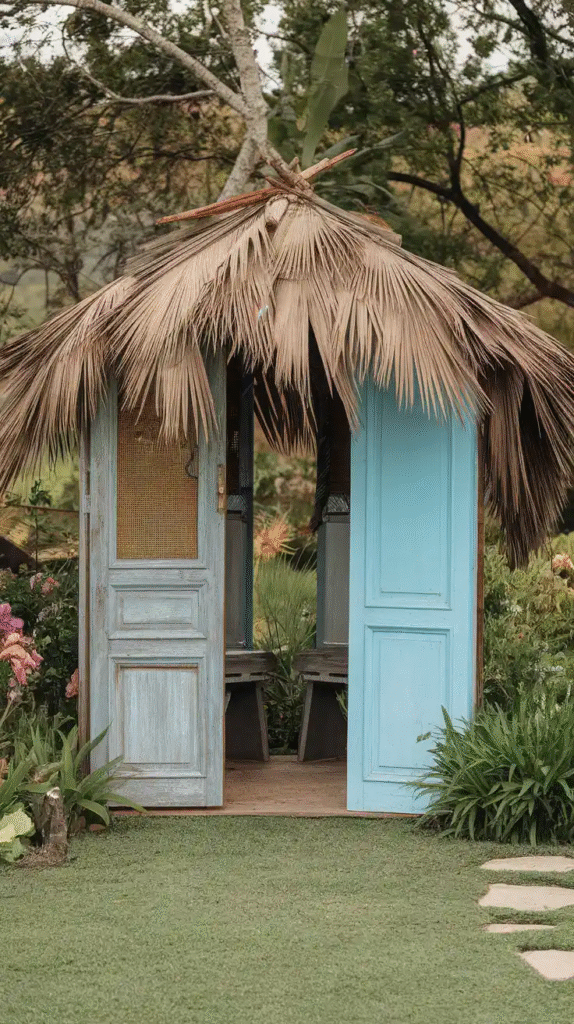
Why buy new when you can repurpose? Old doors make for unique walls or decorative panels in a gazebo, providing character without cost. Arrange them around a simple frame to create an enclosed or semi-enclosed space. I transformed some barn doors into a gazebo backdrop once, and guests kept asking where I bought the “fancy wall”!
4. Bamboo Gazebo
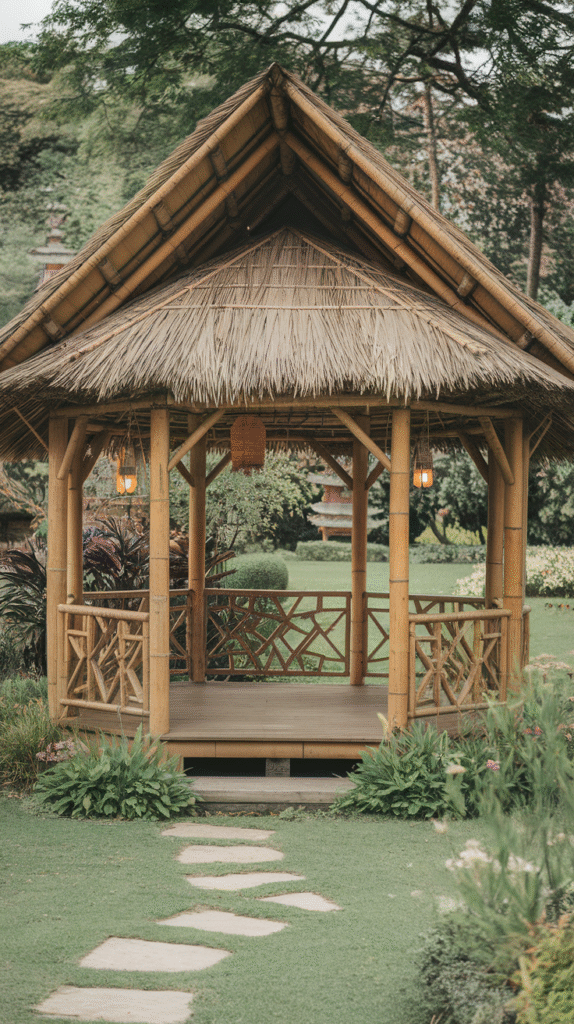
Bamboo is a fast-growing, sustainable, and surprisingly strong building material that lends your gazebo a tropical vibe. If you live somewhere you can source bamboo cheaply or grow it yourself, this option is both eco-friendly and wallet-friendly. Bamboo poles can be lashed together with rope or wire for a natural, open structure.
5. Tent-Style Gazebo
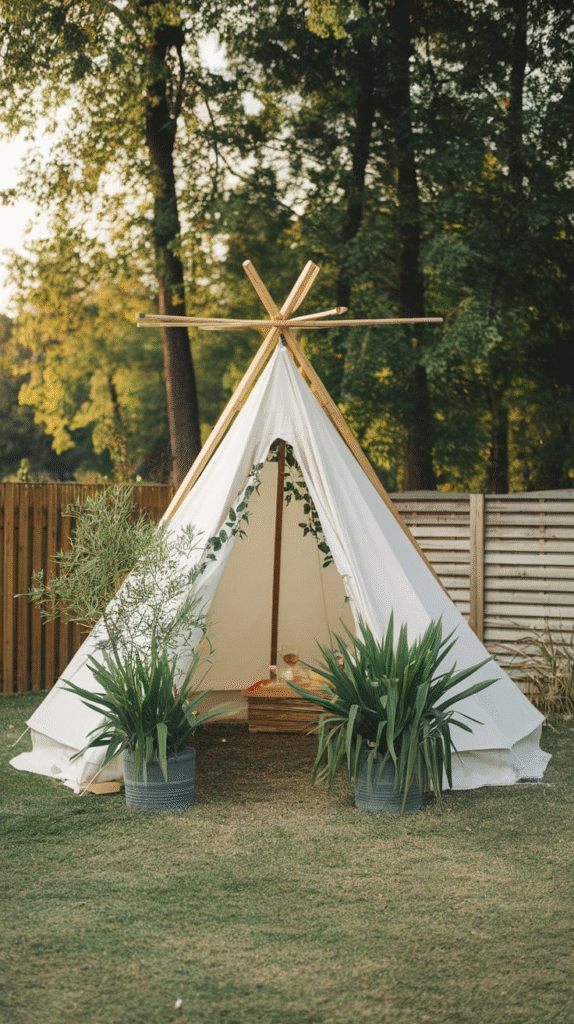
For the simplest and cheapest gazebo, a pop-up tent style gazebo is hard to beat. Available as kits or DIY-able with sturdy poles and waterproof fabric, they offer instant shelter without construction hassle. While not a permanent solution, they’re perfect for seasonal use or events in the backyard.
6. Corrugated Metal Roof Gazebo
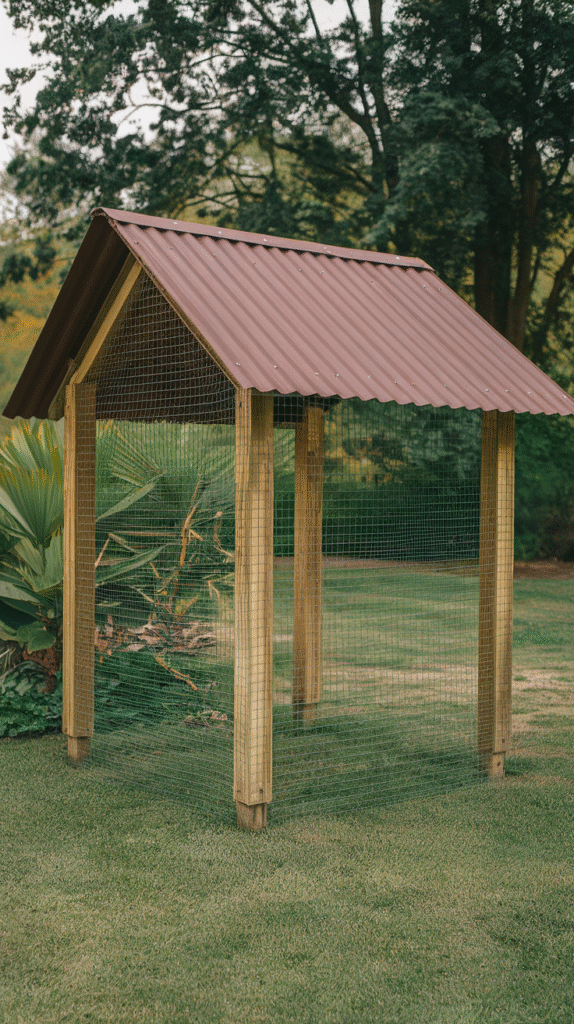
A simple wooden frame combined with corrugated metal roofing sheets offers a durable and budget-friendly gazebo. Metal roofing is easy to install, lightweight, and keeps you dry during rainstorms. The industrial look adds a modern twist to the traditional gazebo style.
7. Canvas-Covered Frame Gazebo
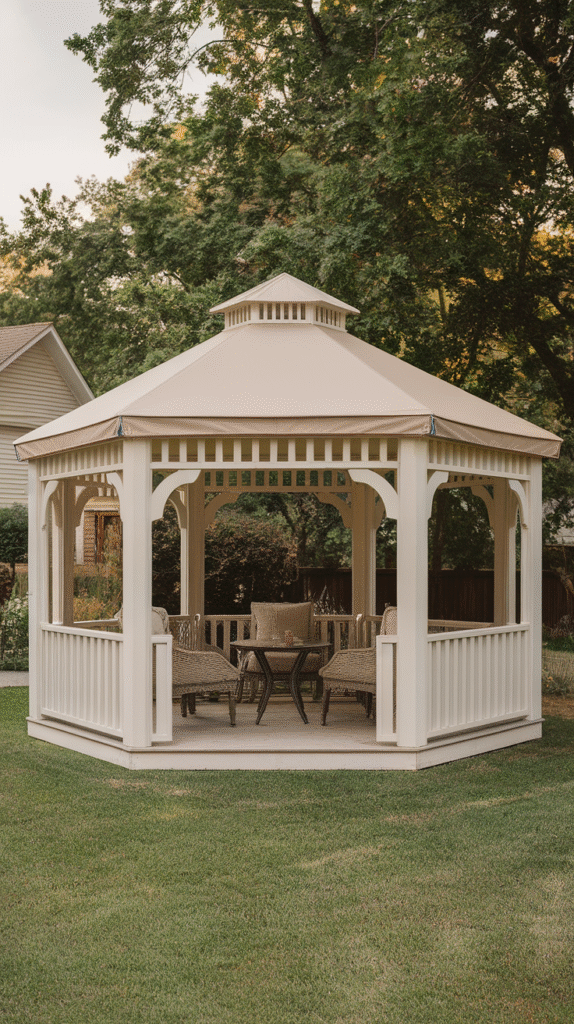
Using a basic wooden or metal frame covered with canvas fabric, you can create a stylish and affordable gazebo with an airy feel. Canvas can be purchased in outdoor-grade varieties that resist mold and UV damage. This option allows for customization with colors and patterns to match your garden’s aesthetic.
8. Palapa-Style Gazebo
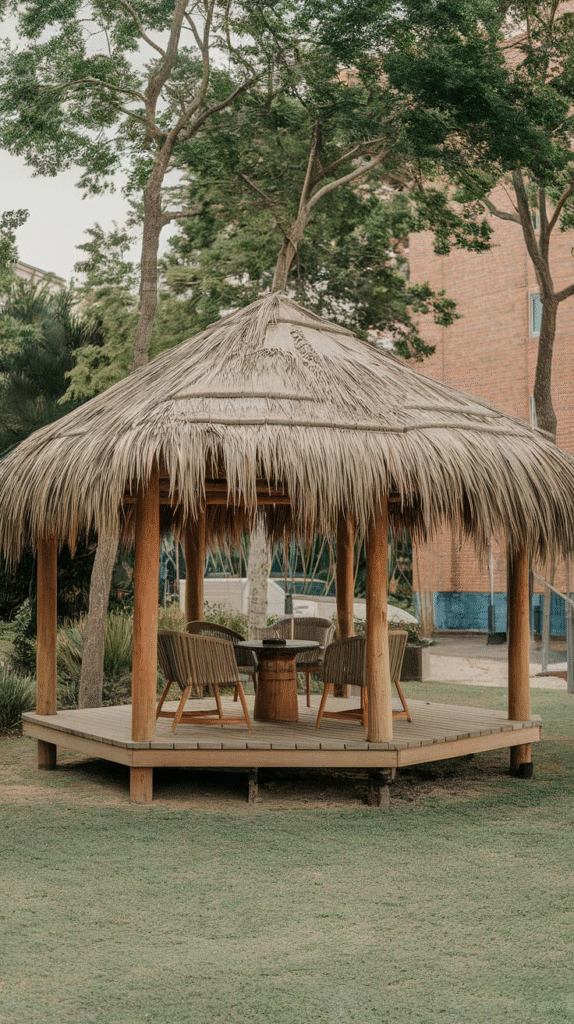
Inspired by tropical beach huts, the palapa-style gazebo uses thatch or palm leaves for roofing, supported by wooden posts. Thatching can be pricey if professionally done, but DIY options with synthetic thatch panels or repurposed materials can be very cheap and visually striking.
9. Raised Deck Gazebo
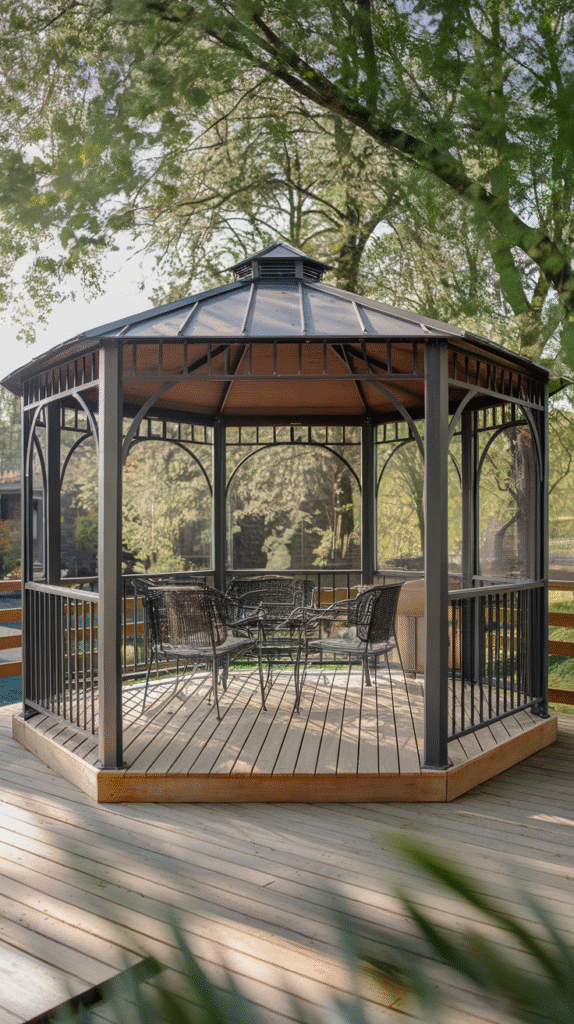
Incorporate a small raised wooden deck as the base for your gazebo to create a defined outdoor room feel. Using affordable decking materials like composite or treated pine, paired with a simple frame, this design adds functionality and style. I built a tiny deck first and realized how much it encouraged us to use the gazebo daily.
10. Chain-Link Fence Gazebo
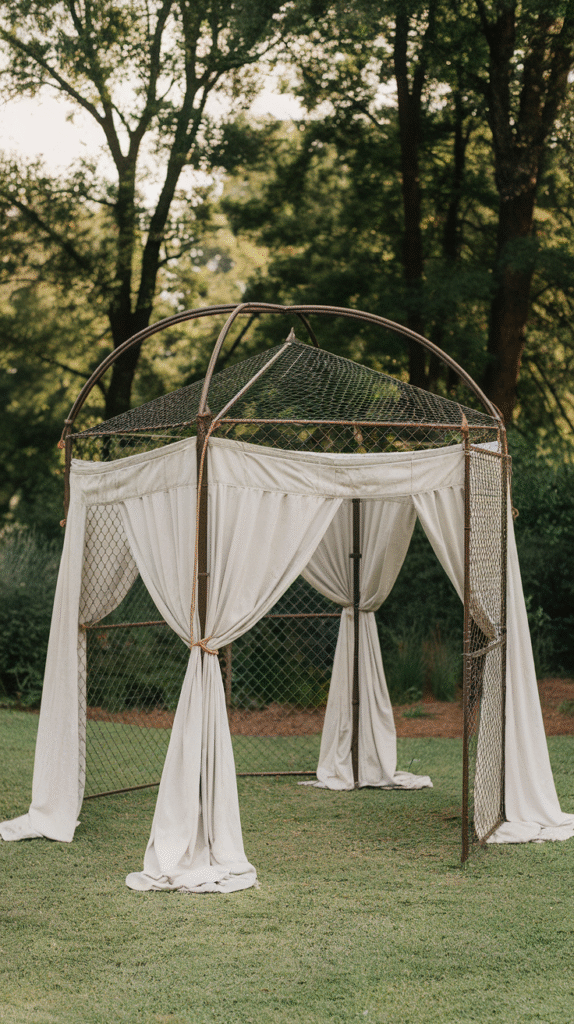
If you have chain-link fencing scraps, consider using them as walls for an industrial-style gazebo. The mesh creates a light and airy structure, perfect for climbing plants like vines or ivy to create natural shade and privacy. Add a simple roof of tarp or fabric for weather protection.
11. Lean-To Gazebo
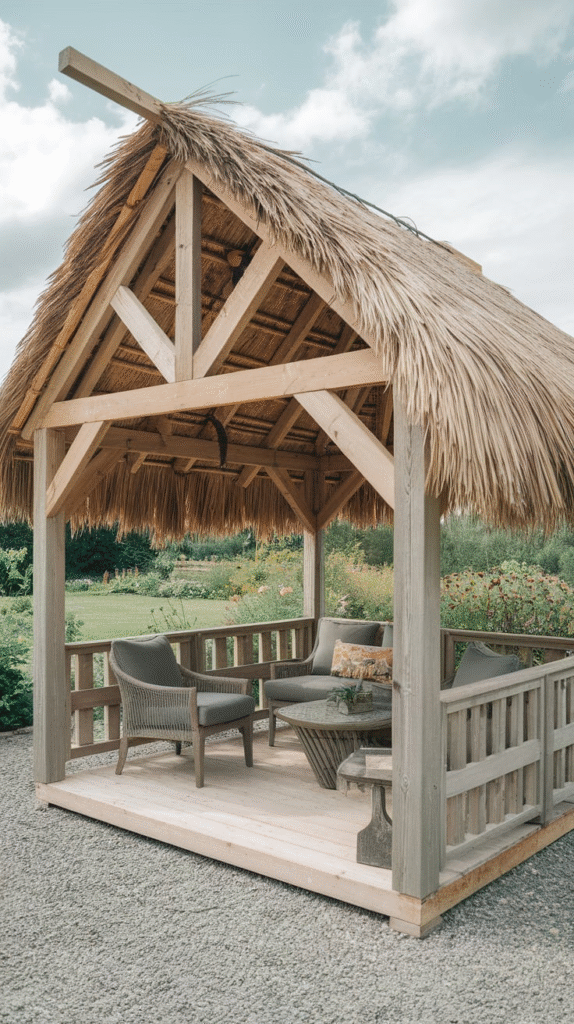
A lean-to style gazebo attached to the side of your house or garage saves on materials and space. The existing wall acts as one side of the structure, which reduces the number of posts and roofing needed. Lean-tos are excellent for creating shaded patios or outdoor dining areas.
12. Reclaimed Window Gazebo
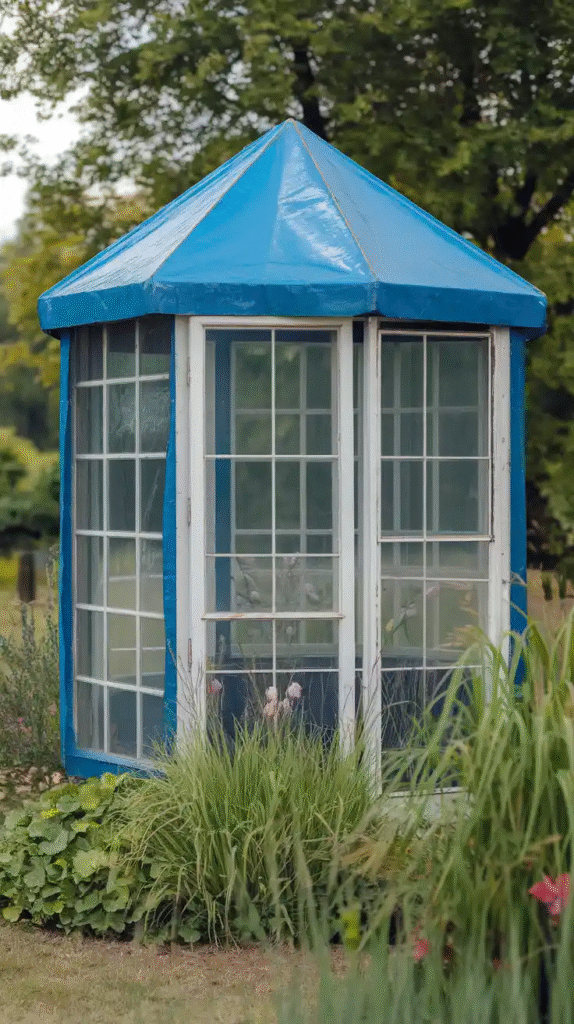
Add charm with old windows as walls or decorative accents. Combining them into a frame creates an almost greenhouse-like feel, and because you’re repurposing, costs stay low. I once built a small gazebo with windows I found at a thrift store, and the reflections of trees and sky added magic to the space.
13. Simple Square Frame Gazebo
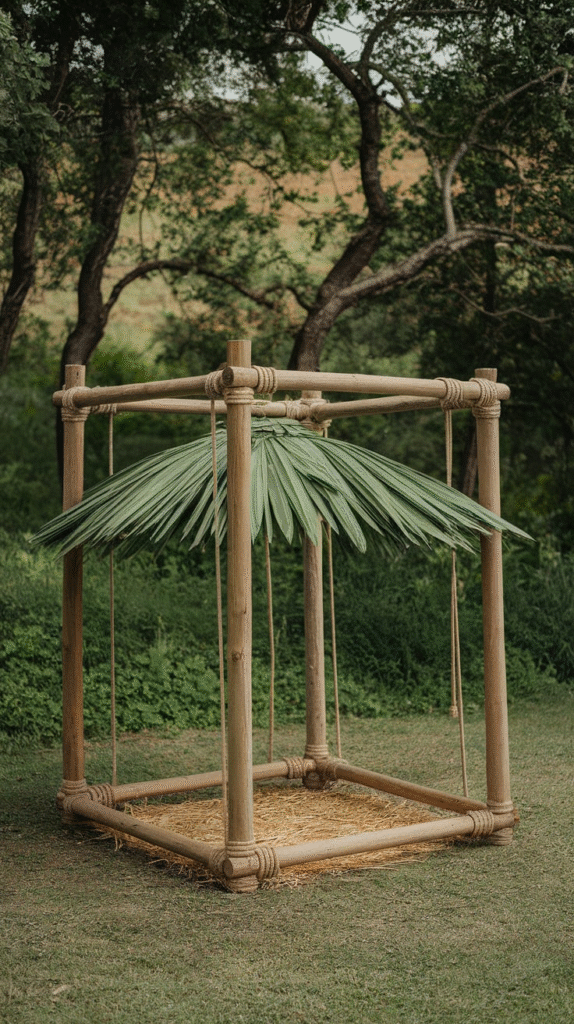
Sometimes the simplest ideas are best. A basic square frame with four posts and a flat or slightly pitched roof can be built quickly with minimal tools and materials. Cover the roof with tarps, shingles, or metal sheets depending on your budget and style preference.
14. Pergola-Style Gazebo
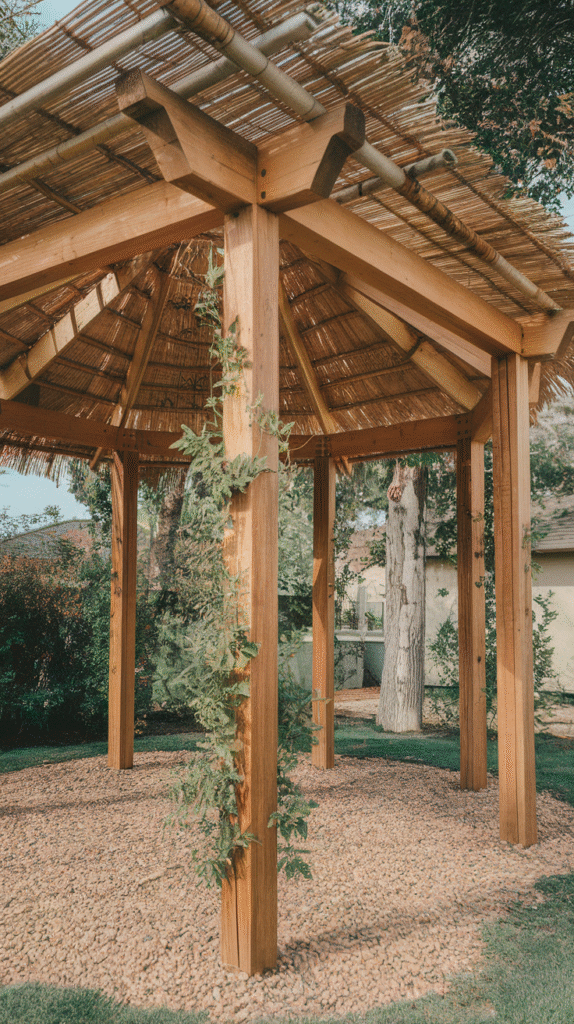
A pergola is a cousin to the gazebo — open and airy, usually without full walls or roofing. You can build a pergola cheaply with rough lumber and add climbing plants or fabric covers to create shade. It’s ideal if you want something light on structure but heavy on ambiance.
15. Canvas-Covered Dome Gazebo
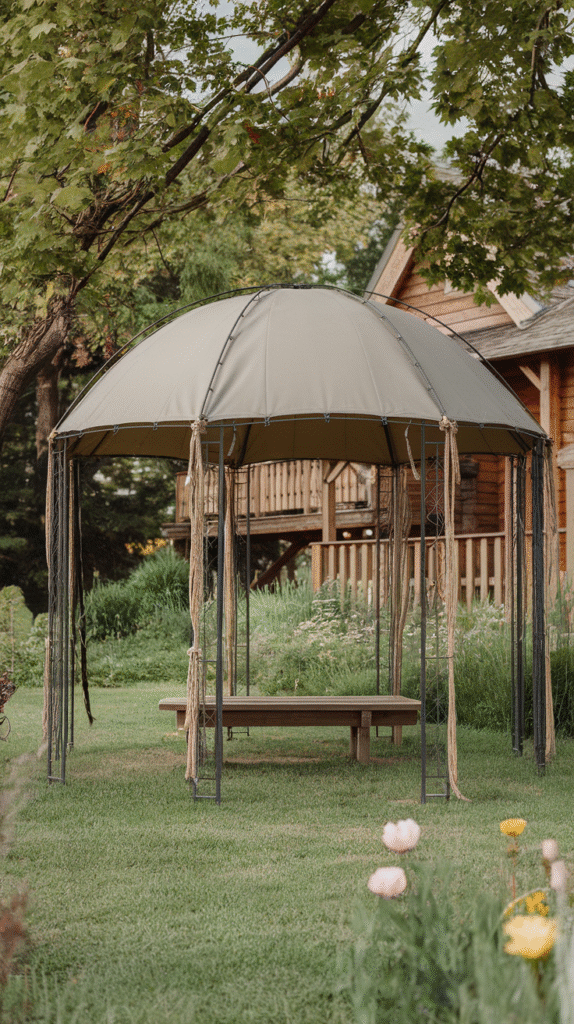
Using flexible poles (like tent poles) to create a dome frame covered with outdoor fabric can give you a unique bubble-shaped gazebo. This modern take is both visually interesting and surprisingly easy to build, requiring no heavy construction skills.
16. Stone Base Gazebo with Wooden Frame
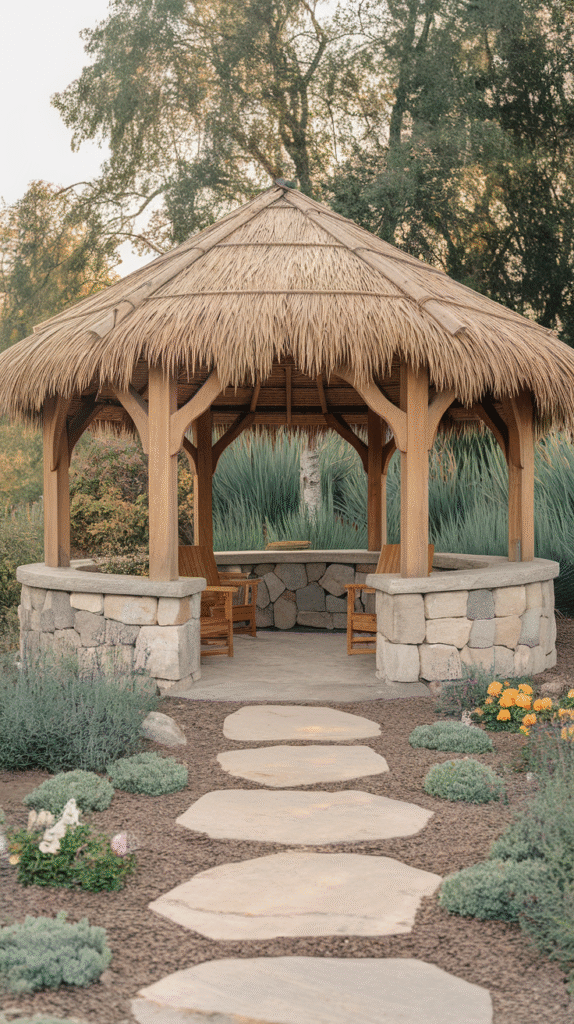
Use cheap local stones or bricks to build a solid base or short walls, topped with a simple wooden frame for the roof. The stone adds durability and a rustic feel while keeping overall costs down by limiting wood use. This method combines sturdiness with budget-friendly materials.
17. Portable Wooden Gazebo
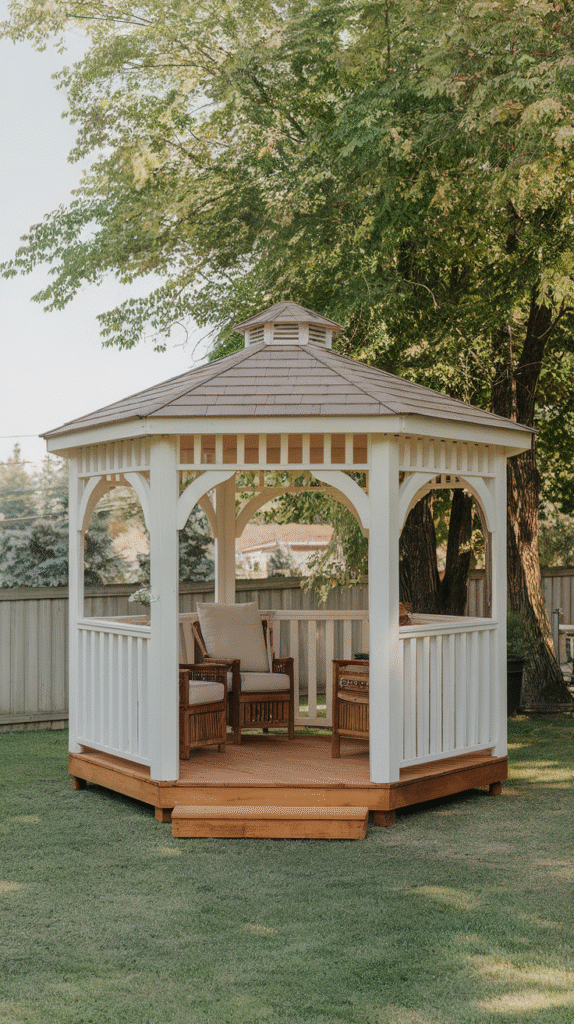
Build a smaller wooden gazebo on skids or with detachable parts for easy moving and storage. This flexibility is great if your yard isn’t large or if you want to rearrange your outdoor space frequently. Smaller gazebos cost less in materials and time, and portability adds value.
18. Upcycled Furniture Gazebo
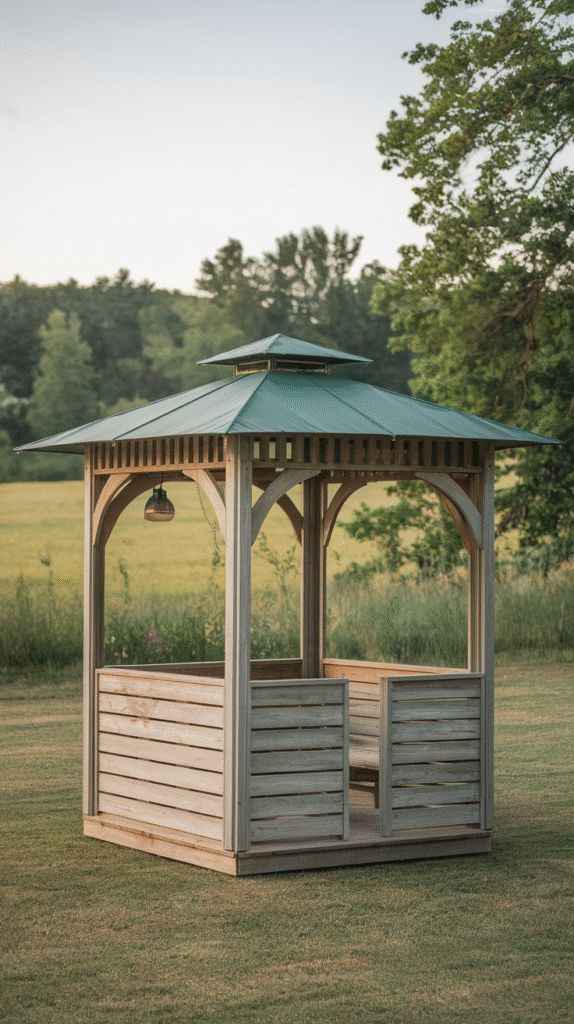
Think outside the box and use old furniture pieces like beds, tables, or shutters to form parts of your gazebo. For example, an old bed frame can be the foundation or the roof structure. These unexpected materials can give your gazebo a quirky, vintage vibe at minimal cost.
Essential Tips for Building Your Cheap DIY Gazebo
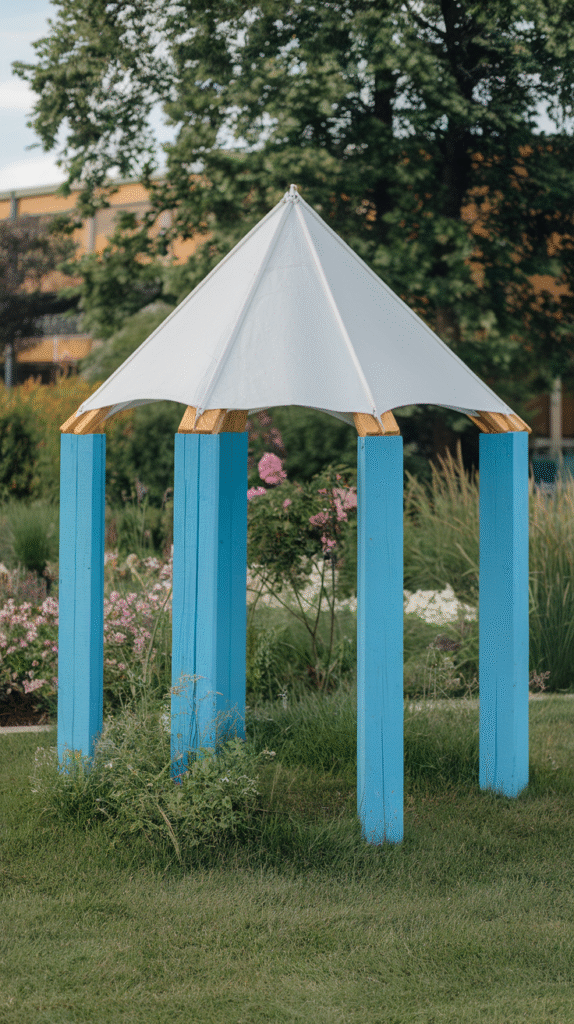
Building on a budget is as much about clever planning and smart sourcing as it is about construction skills. Here are some insider tips to keep costs low and quality high:
- Start with a detailed plan or blueprint: It helps avoid costly mistakes and wasted materials.
- Scout for reclaimed or free materials: Craigslist, Habitat for Humanity ReStores, or local classifieds are treasure troves.
- Borrow tools or rent specialty equipment rather than buying.
- Use simple joinery and fasteners: Screws, nails, and brackets save time and are forgiving for beginners.
- Keep the design simple: Ornate details increase costs and complexity.
- Consider modular designs: Build your gazebo in parts to make construction easier and cheaper.
- Include natural shading like trees or vines: This reduces roofing needs.
- DIY finishing touches like paint or stain: Adds protection and style without professional costs.
Personal Anecdote: My Backyard Gazebo Journey
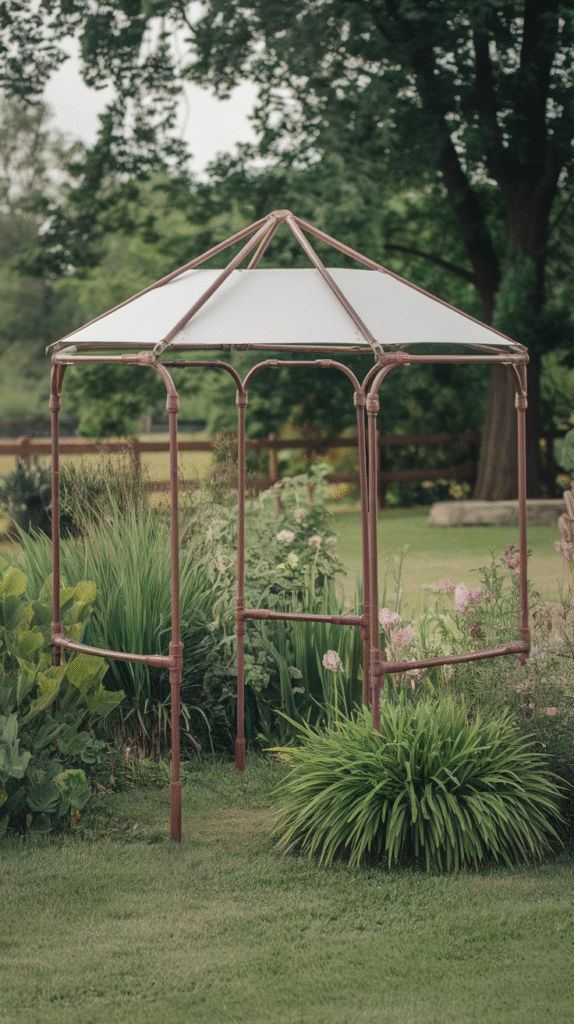
When I decided to build my first gazebo, I wasn’t exactly a carpenter — more of a hopeful tinkerer. I started with a handful of old pallets and some scrap lumber, and the first frame was definitely wonky. But each weekend, I learned a little more: how to level posts, reinforce corners, and keep rain out.
What amazed me was how the gazebo became a magnet for family and friends — suddenly, my backyard was the place to be. The project wasn’t about perfection, but about crafting a space where stories happen. The best part? It cost less than a dinner out but gave me years of joy.
Conclusion
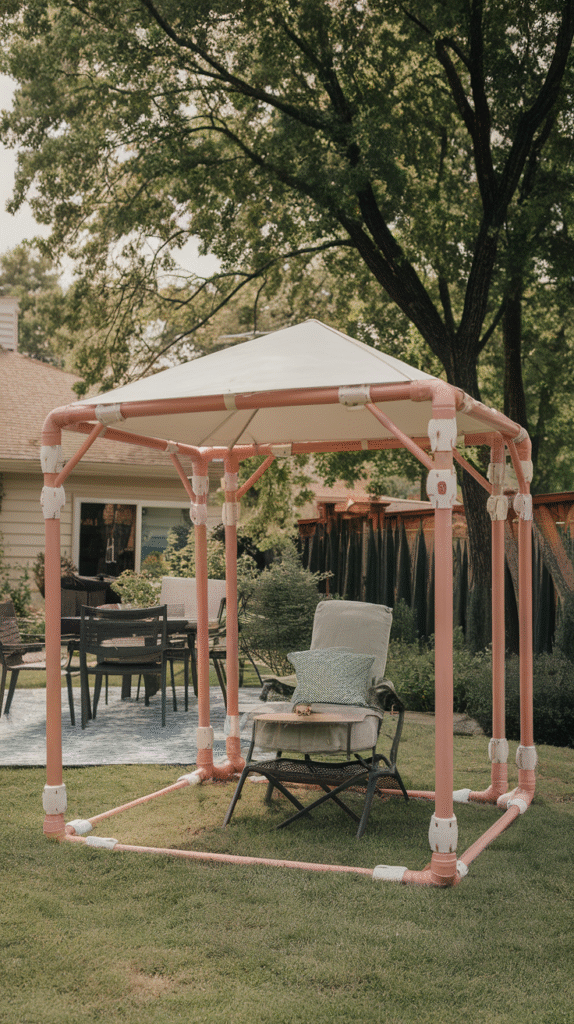
A gazebo can be the crown jewel of your yard — a place for relaxation, connection, and even a little daydreaming. The best part about building your own, especially on a budget, is that every nail, every board, and every corner reflects your effort and style. These 18 DIY gazebo ideas prove that you don’t need to spend a fortune or be a master builder to create something beautiful and functional.
So, gather your tools, call up a friend or two for help, and start designing your outdoor sanctuary. The next time you sip your morning coffee or enjoy a sunset dinner, you’ll smile knowing you built the perfect setting yourself.

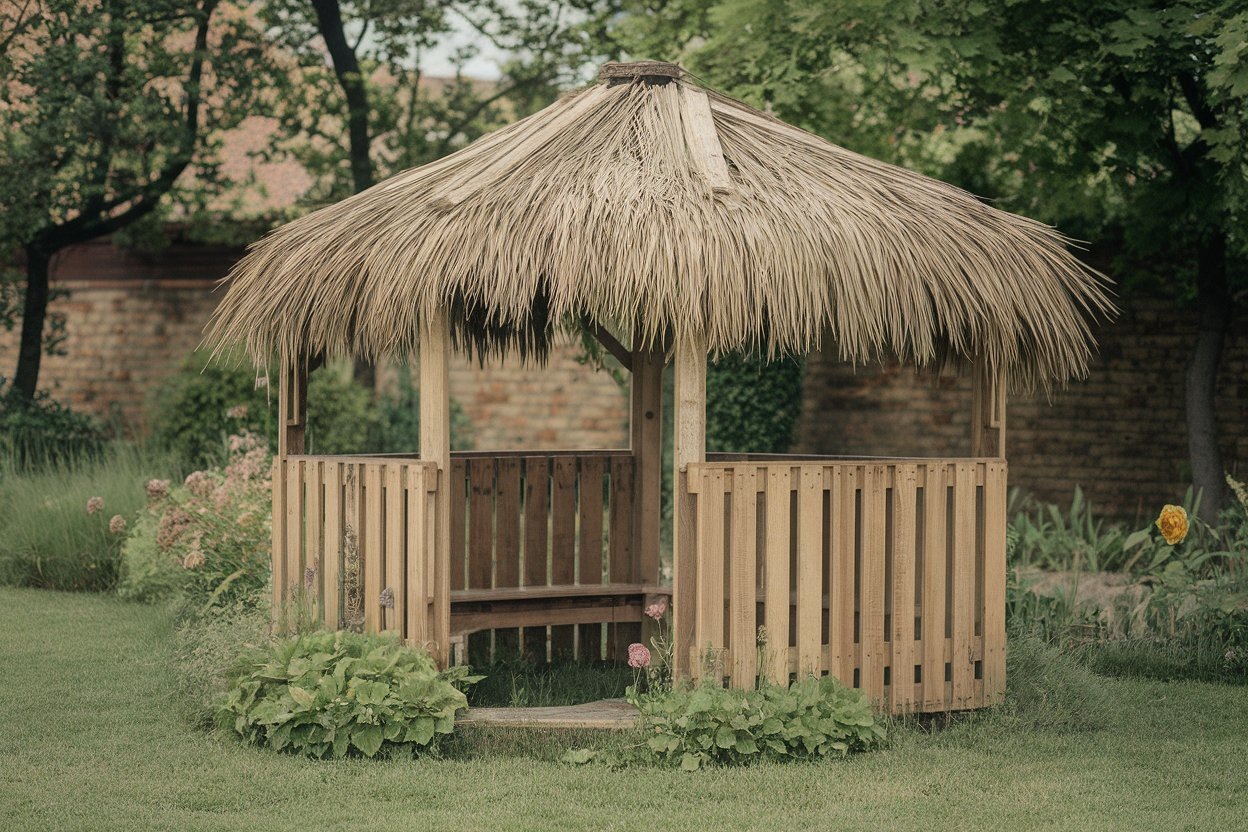
Leave a Reply